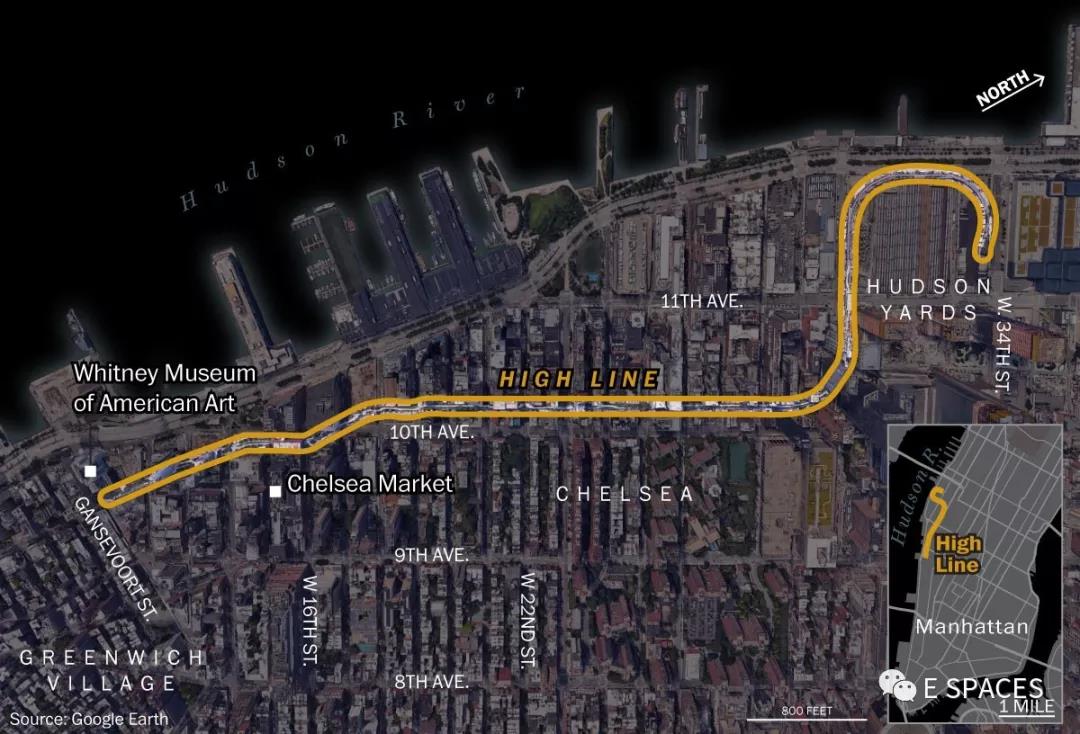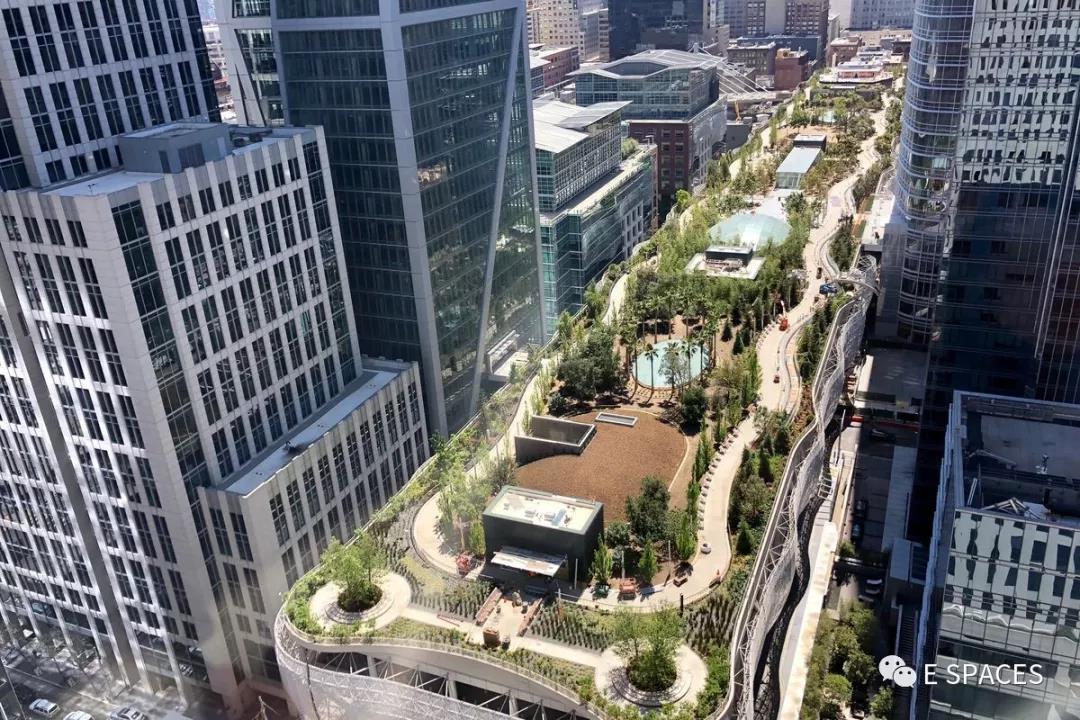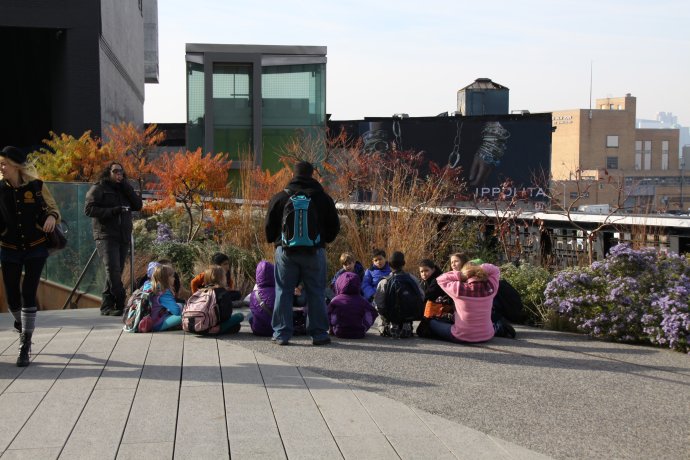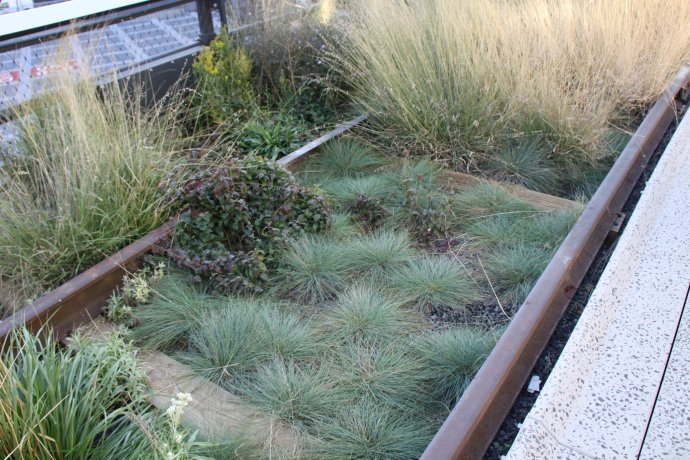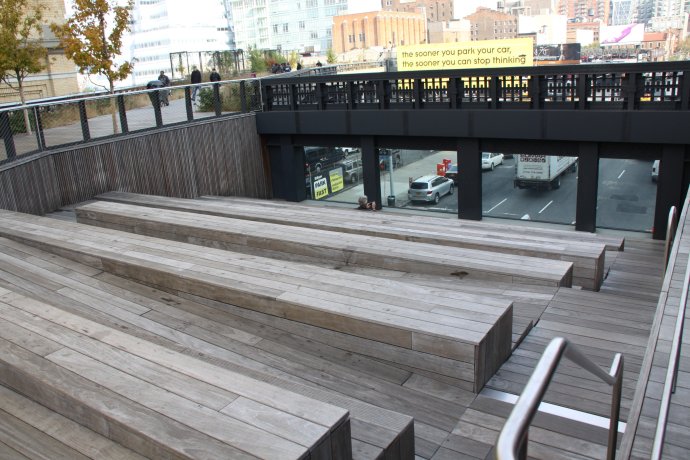Written by Bin Chen
For those of us who are studying architecture and planning, when you go to New York, I would recommend you to take a look at the HIGH LINE PARK in Manhattan’s West End. Going there and taking photos is not interesting, but it will be of great benefit to interpreting the plasticity and sustainable development of the city.
HIGH LINE PARK, as the name suggests, is a linear park that stands high. Because being suspended in the air will effectively reduce the danger of ground transportation, HIGH LINE was once the lifeline of New Yorkers— “lifeline of New York”.
This line runs 1.45 miles north from 34th Street on the west side of Manhattan to the south and Gansevoort St to the north. When trucking was not popular, HIGH LINE used to be Manhattan’s main freight transportation channel. But in 1980, HIGH LINE was completely replaced by more convenient trucking. This is the development of the metropolis. When it loses its original function, it quickly becomes a “cancer” that hinders the development of the city. In 1999, HIGH LINE was in danger of being demolished. Fortunately, the then New York City government made a bold decision to retain the railway and transform it into a linear urban park.
Comparing with China, the United States is a country without a long history. Perhaps these abandoned railways remaining in the city tell the world about the history of New York, which was developed rapidly under the Great Industrial Revolution. For most New Yorkers, retaining the remaining railways in the city is to preserve this history.
In fact, as early as the founding of P.R.C, China had a very similar idea to HIGH LINE PARK. The famous architect Liang Sicheng once suggested that on the basis of retaining the ancient city walls of Beijing, a three-dimensional aerial garden was built on the walls. Liang said, “If completed, it will be the only place in the world that can accommodate tens of thousands of people for leisure and entertainment.” That not only preserved the cultural monuments, but also gave it new functions. Liang also drew a rendering of this plan, and even if people see it now, it will still be exciting.
Unfortunately, such an idea is unacceptable to a new government that is anxious to break with the semi-feudal, semi-colonial old China. What’s more, if it is to be converted into a garden, isn’t it necessary to grease the walls of the feudal master? History and our Chinese HIGH LINE PARK just passed by. Yes, it seems that truth is difficult to hold in the hands of a few people!
HIGH LINE PARK is a proposal selected by two Democrats in New York to draw on the practice of Promenade Plantee in Paris, France, in an open competition. The transformation of this line is mainly to provide citizens with a WALKING TRAIL in the city. At the intersection with each block, the designer provided a rest area similar to the observation deck, where you can see the street scenes of New York at different times of the day (STREET SCAPE), which is “Borrowing Sences” in Suzhou gardens in China. It’s just that the scenes borrowed are more life, not lakes and mountains.
The design of HIGH LINE PARK embodies the meaning of LINE: the ground is paved with narrow concrete blocks, and the remaining tracks are still clearly visible. Some of the paving is designed to be connected to the seat. Most of the rest areas are made up of long wooden boards directly, and they have different shapes with texture. It’s simple and straightforward.
The LANDSCAPE of HIGH LINE PARK is also very interesting, deliberately imitating the overgrown natural form, it can evoke people’s memory of this history (MEMORY); the design of the fun space (NODE) is also quite charming, people lingering.
But what attracts me to HIGH LINE PARK is not its design itself, nor the focus of this article. For visionary urban designers, the success of New York ’s HIGH LINE PARK is that it ’s focus is not on the present, but on the overall planning of the West Side of Manhattan in 20, 50, and even 100 years later. Now, for most visitors to New York, most of those who know HIGH LINE PARK may be interested in art, architecture, and planning. It is not difficult to understand that for tourists, today’s HIGH LINE PARK cannot explain their understanding of the metropolis. However, from the newly built apartments and office buildings on both sides of the current HIGHLINE PARK, such as the AIC building of FRANK GEHRY, it is not difficult to see the outline of future development in this area. We can imagine that when the surrounding abandoned factories and warehouses are slowly replaced by new-function buildings, HIGH LINE PARK gradually turns into a community park, and this industrial area also gradually changes its attributes and glows. New glory comes out.
This “reverse thinking” is really amazing! That is, on the basis of retaining historical context, first establish a city’s backbone (community public space), and then gradually demolish or rebuild the skeleton on both sides of this backbone. I did n’t go to the New York City Hall or its website to see the ZONING in this area, but I might as well make a bold guess that the bottom of this erected sky garden can be a hiding place for basic equipment and air-conditioning rooms in surrounding buildings plumbing wells and substations, or large parking lots for urban complex can be built under this HIGH LINE. At the same time, because the bottom of HIGH LINE intersects with the urban interface, it can be better used to transform into small commercial and retail, or grocery stores. They will be filled with the quaint atmosphere in the iteration of the city, but will be subtly integrated into the fresh and active urban civilization …
This reminds me of some practices of the Chinese government on the reconstruction of old districts, as if there is room for development only through constant demolition. I remember at a report meeting of a project, a pot-bellied Chinese government official talked about the protection of an old district vegetable market and said with a rhetoric, “I don’t see any value in it now. block and do nothing”. Yes, it is undeniable that the development of society will inevitably make the old things lose value, but we must remind ourselves from time to time that our city construction is a plan for the future and a plan for sustainable development, because new things are always one day it will become old. This is like an old man who has gradually become obsolete in social life. Does he or she really lose its original value and become useless? We may not have to regenerate these “old people” to make them flourish like young people. But the experience and history contained in them, cultural connotation of past and present life, should we also need give some respect? Therefore, compared to the planning, the strength of the building seems too small to the designers of the HIGH LINE PARK city. They think more about the plasticity of the city. This is really a place that is very worthwhile for our Chinese architects to learn.
Historical and cultural protection has always been a worldwide topic, and contradictions in urban design are omnipresent. A simple path can have a significant impact on the community. I think, when our future planning for a certain area of the city is not quite clear, can our designers first preserve the historical sites and add their new functions, or simply form a public space first, then The law is used to gradually develop and improve the surrounding facilities, so that they can develop in a healthy way.
For example, the transformation of the old district vegetable market I mentioned earlier, you can try to retain some of the old street vegetable market, but you can transform its original trading function into an exhibition space. The other vegetable farm spaces will be transformed to make them more effective. City By Law can be used to control the F.A.R and height limit of surrounding buildings so that they do not “eat” this history.
When the shape of the vegetable field became a historical memory, the first definition of the surrounding residents was a new city park and a new place to relax and play. Then we can come to plan and design buildings, apartments, businesses, hospitals and schools around it. This idea of landscape first, architecture second, is not only able to retain the original historical features of the site, but also play the role of maximum site value, right?
I often think that plasticity and sustainable development must be something that can be expected. Just like HIGH LINE, you can see its foundation and development outline. Just like planting a small tree with enough sunlight and air, there can be a day when it becomes a towering tree. But when we force a big tree to grow on another piece of land, the tree will soon die. This big tree is like a contextless, rootless, but superficial community. It puzzles us with question what will it look like in a hundred years? Is it all to be overthrown and rebuilt? Or will this historical fragment created be fortunately protected? But even if it survives, how can anyone know the history of this area before? Who can fill this gap?
This is something we have to think about while standing at HIGH LINE PARK.
